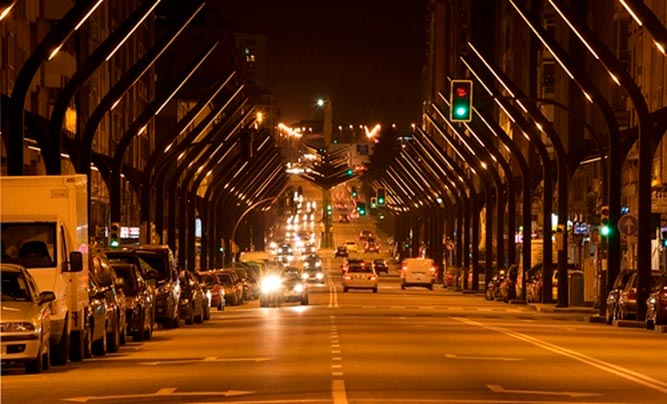Thursday March 31st, 2016

The City Council of Gijón has promoted a contest for the installation and maintenance of a comprehensive solution to enable the internet of things in the city of Gijón, which contemplates the intelligent control of lighting.
The Facilities and Services division of ImesAPI has been awarded Lot II. The project consists of a total of 1,200 units, divided into 5 different models of luminaires, selected according to their lighting characteristics, so that they perfectly fit the intended uses.
These solutions allow a technological growth of the city, increasing the habitability, improving the quality of life and the sustainability of the city, since unifying platforms, like the one offered, increases the benefits of sharing the infrastructure for future projects. Open solutions protect investments and future expansions of systems, increasing opportunities for the city and its inhabitants.In short, look for solutions to create a Smart City or to help in its development.
Requirements you are looking for in a Smart City:
- Two-way communications. Interconnection with different types of sensors. Reduction of energy consumption.
- Storage and exploitation of the information collected.
- Flexibility, modularity, interconnection and use of open standards.
- Prepare the city for “the internet of things”.
This system is ready to offer a vision of future with projects like:
- Control of public lighting.
- Advanced measurements (water, gas …).
- Advanced consumption control.
- Parking control.
- Control of waste collection containers.
The public lighting control solution allows reducing energy consumption, providing significant savings, reducing costs and incorporating new services and functions on lighting. Main features of the solution:
- Independence of the manufacturer of the luminaire. Integration with PLC / wireless.
- On and off by dimming.
- Storage of information and generation of reports.
- Historical data and events.
- Consumption of energy, tension …
- Global time synchronization.
- Secure Web access for monitoring and control functions of the system.
- Geo-referenced map of the points of light.
- Built-in astronomical calendar.
- Grouping of points of light.

 Español
Español